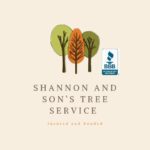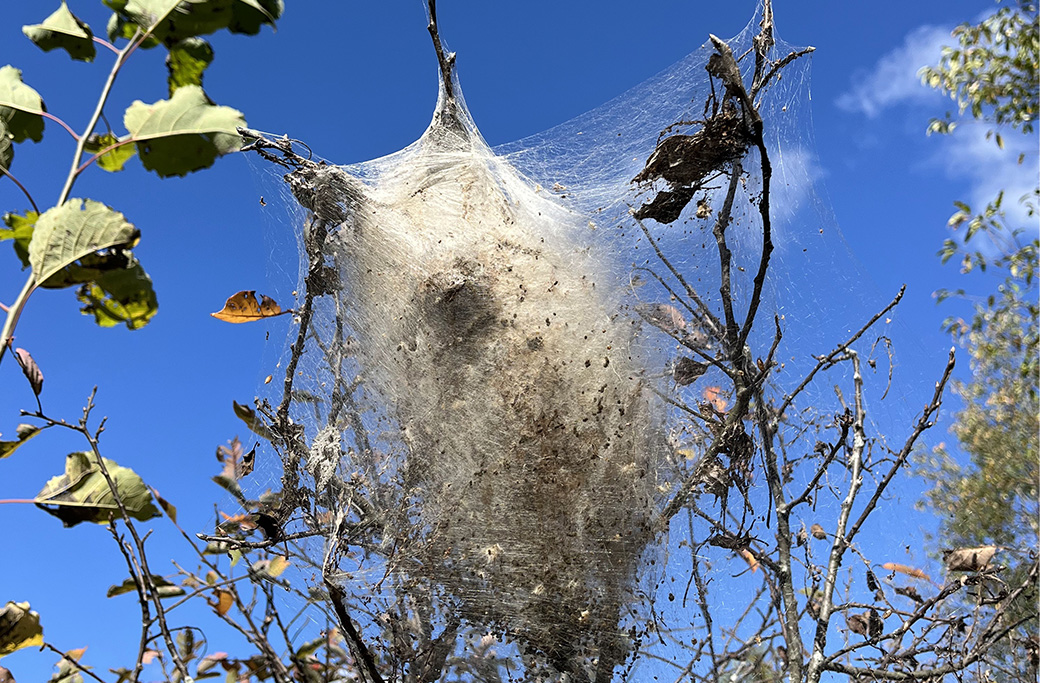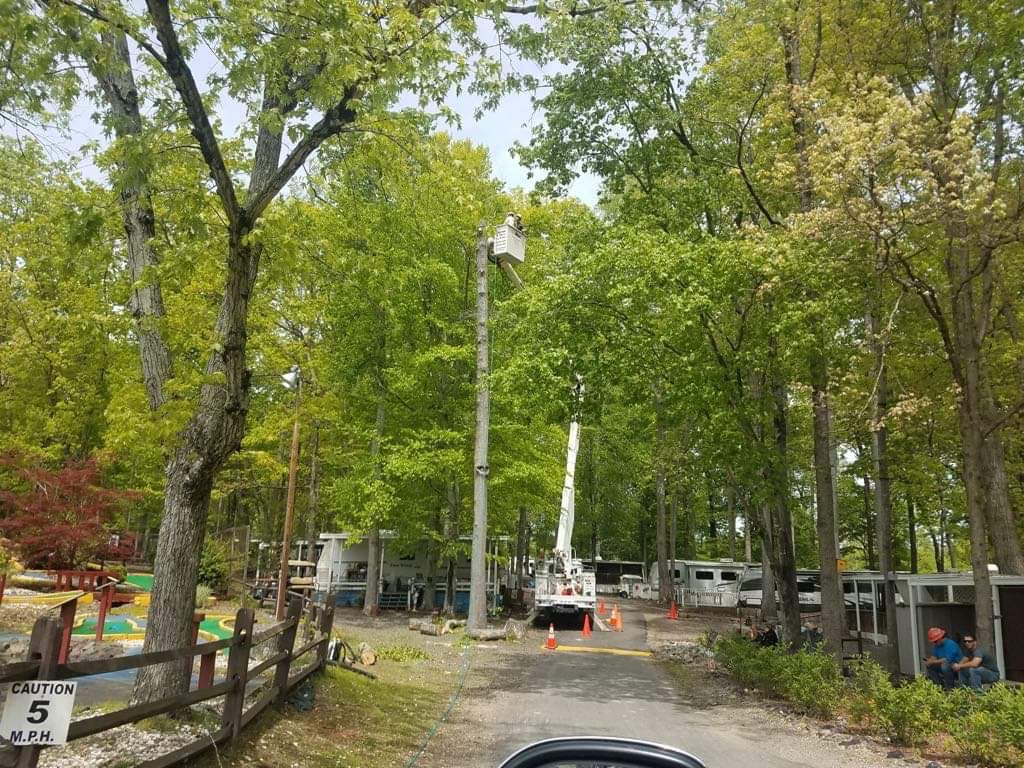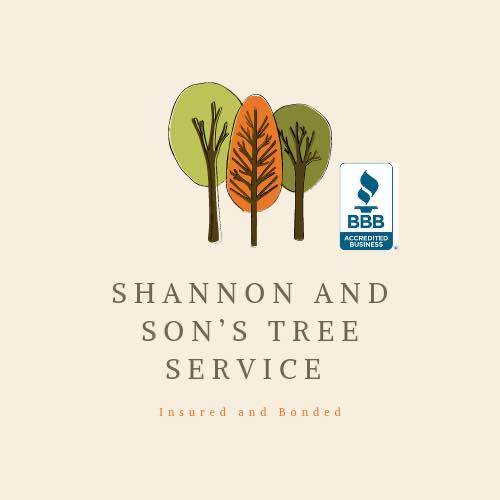Summer brings warm weather, longer days, and unfortunately, an army of pests that can wreak havoc on your trees. North Carolina’s humid climate creates the perfect breeding ground for insects that can damage or even kill your beloved trees. Understanding how to identify and manage these pests is vital for maintaining healthy Winston-Salem trees throughout the growing season.
Tree pest control requires more than just spraying chemicals when problems arise. The most effective approach combines prevention, early detection, and targeted treatment using integrated pest management (IPM) principles. This comprehensive strategy protects your trees while minimizing environmental impact and ensuring long-term tree health.
Common Summer Tree Pests in Winston-Salem
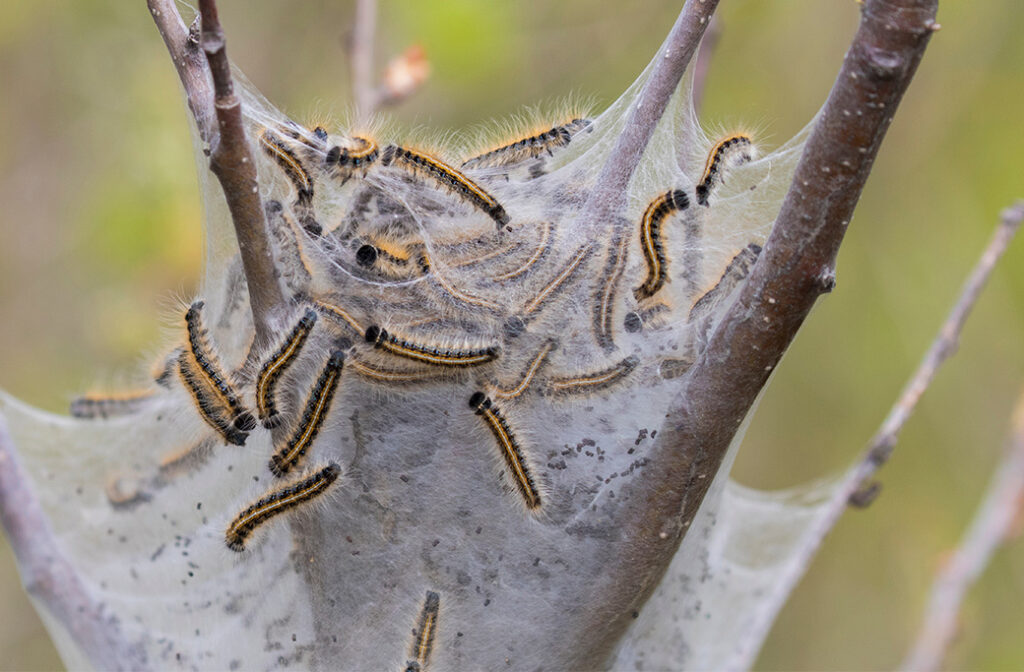
Eastern Tent Caterpillar (Malacosoma Americanum)
Aphids: The Tiny Sap Suckers
Aphids are small, soft-bodied insects that cluster on new growth, leaves, and branches. These pests come in various colors including green, black, red, and white. They feed by piercing plant tissue and sucking out nutrient-rich sap, which weakens trees and can stunt growth.
Signs of aphid infestation include:
-
- Curled or yellowing leaves
- Sticky honeydew coating on leaves and branches
- Presence of sooty mold (black fungus growing on honeydew)
- Clusters of small insects on new growth
Aphids multiply rapidly in warm weather, making early detection essential. They particularly target stressed trees, so maintaining proper tree health is your first line of defense.
Japanese Beetles: The Voracious Leaf Eaters
Japanese beetles are metallic green and bronze insects about half an inch long. They emerge in early summer and feed on over 300 plant species, including many common tree varieties. These beetles skeletonize leaves, eating the soft tissue between veins and leaving behind a lace-like appearance.
Japanese beetle damage appears as:
-
- Skeletonized leaves with only veins remaining
- Brown, dead patches on leaves
- Defoliation starting from the top of the tree
- Adult beetles visible on leaves during daylight hours
Heavy infestations can completely defoliate trees, severely weakening them and making them susceptible to other problems.
Spider Mites: The Heat-Loving Microscopic Menaces
Spider mites thrive in hot, dry conditions common during North Carolina summers. These tiny arachnids are barely visible to the naked eye but cause significant damage by feeding on leaf cells. They reproduce extremely quickly, with populations exploding during heat waves.
Spider mite symptoms include:
-
- Fine webbing on leaves and branches
- Stippled or bronzed leaf appearance
- Premature leaf drop
- Overall decline in tree vigor
Spider mites are particularly problematic on evergreen trees and can cause permanent damage if left untreated.
Scale Insects: The Armored Attackers
Scale insects attach themselves to bark, branches, and leaves, forming hard or soft protective coverings. They feed continuously on plant sap, gradually weakening trees. Scale insects are particularly challenging because their protective covering makes them resistant to many treatments.
Scale insect indicators include:
-
- Small, round or oval bumps on bark and branches
- Yellowing or wilting leaves
- Sticky honeydew secretions
- Premature leaf drop
- Branch dieback in severe cases
Eastern Tent Caterpillars: The Web Builders
Eastern tent caterpillars create distinctive silk tents in tree crotches where they congregate. These caterpillars emerge in early spring but continue feeding through summer, defoliating entire branches. While rarely fatal to healthy trees, repeated infestations can weaken trees significantly.
Tent caterpillar signs include:
-
- Silk tents in branch forks
- Defoliation around tent areas
- Caterpillars moving in lines along branches
- Egg masses on twigs (visible in winter)
Integrated Pest Management (IPM) Solutions
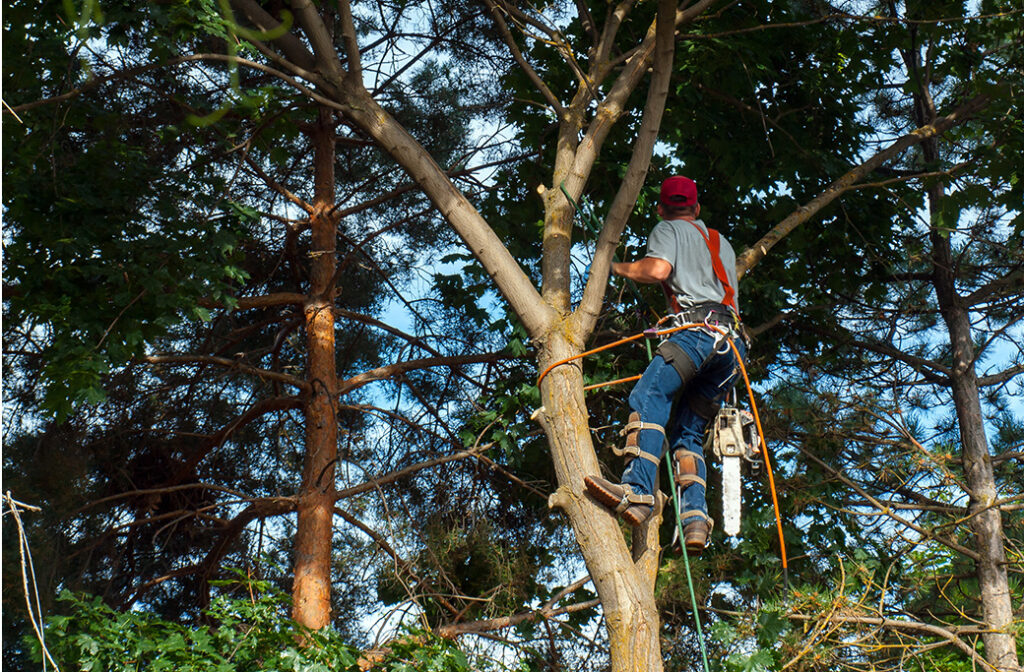
Pruning keeps pests away by removing dead or damaged branches.
IPM solutions represent the gold standard for effective tree pest control. This approach combines multiple strategies to manage pests while minimizing environmental impact and protecting beneficial insects. IPM focuses on prevention, monitoring, and targeted intervention rather than relying solely on pesticides.
Cultural Control Methods
Cultural controls form the foundation of effective pest management. These practices create an environment that discourages pests while promoting tree health.
Proper Watering Practices
Deep, infrequent watering strengthens trees and helps them resist pest attacks. Water trees slowly and deeply, allowing moisture to penetrate the root zone. Avoid frequent shallow watering, which weakens root systems and stresses trees.
Mulching for Tree Health
Apply a 2-3 inch layer of organic mulch around trees, keeping it several inches away from the trunk. Mulch conserves moisture, moderates soil temperature, and gradually improves soil structure. Healthy soil supports strong root systems, which translate to pest-resistant trees.
Proper Pruning and Maintenance
Regular pruning removes dead, diseased, or damaged branches that attract pests. Prune during dormant seasons when possible, and always use clean, sharp tools to prevent disease transmission. Remove water sprouts and suckers that provide easy entry points for pests.
Site Selection and Tree Placement
Choose appropriate tree species for your specific site conditions. Trees planted in unsuitable locations experience stress that makes them vulnerable to pest attacks. Consider factors like soil type, drainage, sun exposure, and mature tree size when planting.
Biological Control Methods
Biological controls harness nature’s own pest management system by encouraging beneficial insects and organisms that prey on harmful pests.
Beneficial Insects
Many insects are natural predators of common tree pests. Ladybugs, lacewings, and parasitic wasps control aphid populations. Predatory mites feed on spider mites. Creating habitat for these beneficial insects reduces pest pressure naturally.
Encouraging Natural Predators
Plant diverse flowering plants near trees to provide nectar and pollen for beneficial insects. Avoid broad-spectrum pesticides that kill both harmful and beneficial insects. Maintain areas of natural vegetation where predators can overwinter.
Companion Planting
Certain plants naturally repel pests or attract beneficial insects. Marigolds, nasturtiums, and herbs like basil and thyme can help deter some tree pests when planted nearby.
Chemical Control Methods
When cultural and biological controls aren’t sufficient, targeted chemical treatments may be necessary. The key is using the least toxic option that effectively controls the specific pest problem.
Horticultural Oils
Lightweight horticultural oils suffocate soft-bodied insects like aphids and scale insects. These oils are relatively safe for beneficial insects when applied correctly and break down quickly in the environment.
Insecticidal Soaps
Soap-based insecticides work by disrupting pest cell membranes. They’re effective against soft-bodied insects and have minimal environmental impact. However, they require direct contact with pests and may need repeated applications.
Systemic Insecticides
For severe infestations, systemic insecticides absorbed by tree roots can provide long-lasting protection. These treatments should only be applied by certified professionals due to their potential impact on beneficial insects and the environment.
Targeted Spraying
When spraying is necessary, focus on affected areas rather than treating entire trees. Apply treatments during calm weather conditions, preferably in early morning or evening when beneficial insects are less active.
Preventative Measures for Long-Term Tree Health

Prevention remains the most effective and economical approach to tree pest control. Healthy trees naturally resist pest attacks and recover more quickly from damage.
Maintaining Optimal Tree Health
Strong, healthy trees are your best defense against pest problems. Focus on providing optimal growing conditions through proper watering, fertilization, and soil management.
Soil Health and Nutrition
Conduct soil tests to determine nutrient levels and pH. Most trees prefer slightly acidic to neutral soil (pH 6.0-7.0). Amend soil with organic matter to improve structure and drainage. Avoid over-fertilizing, which can promote excessive growth that attracts pests.
Proper Fertilization
Feed trees with balanced, slow-release fertilizers that provide steady nutrition throughout the growing season. Organic fertilizers improve soil health over time and reduce the risk of nutrient burn. Time fertilizer applications to coincide with active growth periods.
Stress Reduction
Minimize tree stress by protecting roots from compaction, avoiding damage during construction, and providing adequate space for mature growth. Stressed trees release chemical signals that attract pests, making stress reduction a crucial pest prevention strategy.
Regular Tree Inspections
Early detection allows for prompt treatment before pest problems become severe. Regular inspections help identify issues when they’re most manageable.
Monthly Monitoring
Inspect trees monthly during growing season, paying special attention to new growth, leaf undersides, and branch crotches where pests often hide. Look for changes in leaf color, unusual growths, or visible insects.
Seasonal Considerations
Different pests emerge at different times throughout the year. Spring inspections should focus on overwintering pests becoming active. Summer monitoring targets heat-loving pests like spider mites. Fall inspections help identify egg masses and overwintering sites.
Documentation and Record Keeping
Keep records of pest problems, treatments applied, and results. This information helps identify patterns and plan future prevention strategies. Photos can help track treatment effectiveness over time.
Environmental Modifications
Modify the environment around trees to make it less hospitable to pests while supporting tree health.
Improving Air Circulation
Proper spacing between trees and regular pruning improve air circulation, reducing humidity that many pests require. Good airflow also helps prevent fungal diseases that weaken trees.
Managing Competing Vegetation
Remove weeds and grass from around tree bases to reduce competition for water and nutrients. This also eliminates hiding places for pests and makes monitoring easier.
Water Management
Ensure proper drainage around trees to prevent root rot and other problems that stress trees. Install drainage systems if necessary, and avoid overwatering during humid summer months.
Pest Control for Summer: Keeping Your Trees Safe
Shannon & Sons Tree Service brings over 20 years of experience in comprehensive tree pest control throughout the Winston-Salem and Triad areas. Our certified arborists understand the unique challenges facing North Carolina trees and develop customized treatment plans for each property.
Professional Assessment and Treatment Plans
Our pest control process begins with a thorough assessment of your trees and property. We identify existing pest problems, evaluate tree health, and assess environmental factors that may contribute to pest issues. This comprehensive evaluation allows us to develop targeted treatment plans that address current problems while preventing future infestations.
Our arborists are trained to recognize the subtle signs of pest problems that homeowners might miss. Early detection is crucial for effective treatment, and our professional eye can spot issues before they become serious problems.
Specialized Equipment and Expertise
Professional tree pest control requires specialized equipment and expertise that most homeowners don’t possess. Our team uses professional-grade spraying equipment that ensures even coverage and reaches areas that handheld sprayers cannot access.
Protect your trees today! Contact us for pest control with professional-grade equipment and certified specialists. Don’t wait—schedule your service now!!
